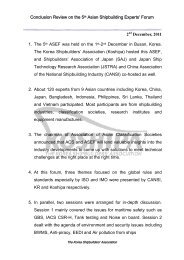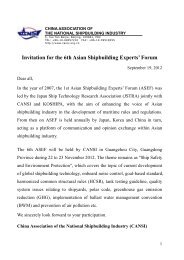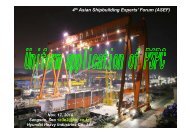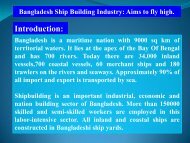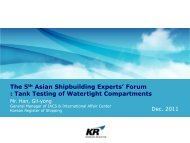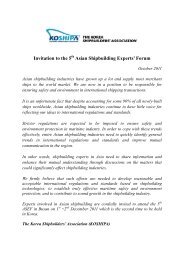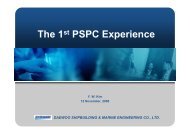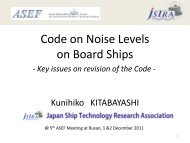4. Study on the Risk-Based Methodology for Ship Structural Design
4. Study on the Risk-Based Methodology for Ship Structural Design
4. Study on the Risk-Based Methodology for Ship Structural Design
You also want an ePaper? Increase the reach of your titles
YUMPU automatically turns print PDFs into web optimized ePapers that Google loves.
1. Safety Level <strong>Based</strong> Assessment• Step 1. <strong>Design</strong> Scope‣ To select initial scantling and c<strong>on</strong>cerned failure mode• Dimensi<strong>on</strong>, locati<strong>on</strong>, material, corrosi<strong>on</strong>, c<strong>on</strong>figurati<strong>on</strong>, etc.• Yielding, buckling, fatigue, impact, etc.• Step 2. Target Safety Level‣ Safety goal, i.e. <strong>the</strong> smallest allowable level securing safety‣ C<strong>on</strong>sidering member type, failure mode and damage c<strong>on</strong>sequence• Step 3-1. Limit State Equati<strong>on</strong>‣ <strong>Design</strong> criteria: Z = R – L (R & L: resistance & load factor)‣ Z = 0 : boundary between safe and fail‣ Probability of failure is <strong>the</strong> likelihood that Z < 0 occursThe 6 th ASEF- 6 -




